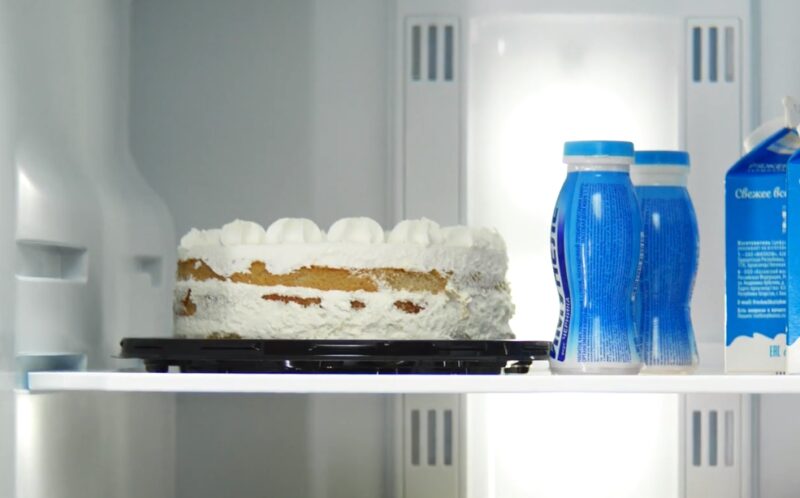Everyone loves a good piece of cake. However, you should always have a limit and not take too much sugar. If you have a lot of cake left, there is no need to worry since there are ways where you can save it and enjoy it for days.
However, simply putting it on a shelf or in a fridge won’t be enough in most cases. Depending on the type of dessert, there are different solutions where you can keep its characteristics.
How Long Can You Keep it in the Fridge?

The ingredients are one of the most important factors that can affect the lifespan of the desert. In some cases, it may remain edible after some time, but the taste simply won’t be the same as on the day when it was fresh. Learning more about the average duration of cakes in the fridge is the best way to know what to expect.
- Fruit Cake: In most cases, you can leave it in the fridge for up to five days. However, additional content can make this time shorter, especially if there are daily products included, along with some ingredients that have higher acidity and moisture.
- Cream Cake: Some of the typical ones are Whipped Cream, Fluffy Chocolate, Cake with Buttercream, and Chocolate Cake. You can expect that the taste will remain the same for at least three days. It is recommended to never keep it for more than a five days since it will lose its characteristics, and waiting for longer than a week will surely make it inedible.
If you are buying it in a regular store, pay attention to the label to check all ingredients. This is the best way to both choose and select the best option for your needs and preferences.
For example, you may decide to look for another option if you are not sure whether you will buy too much of it. For bigger events, the best choice are cakes that will last longer since you can enjoy them for a whole week afterward.
What Can Affect Longevity?
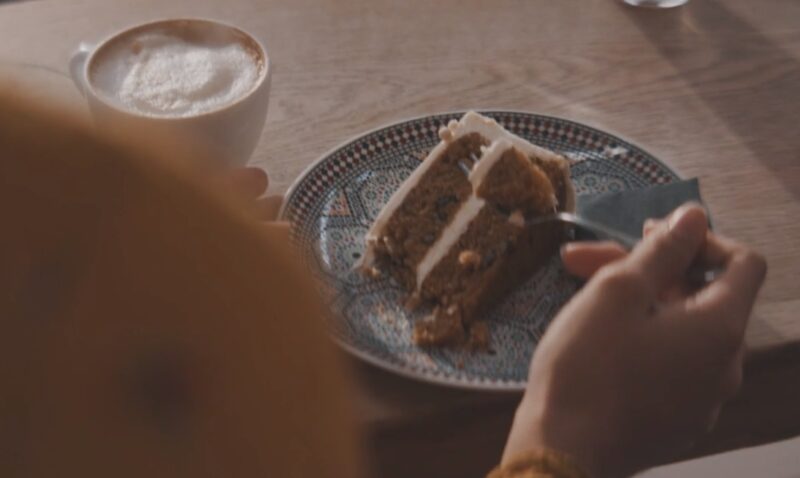
As we already mentioned, various things can impact the interval where keeping the cake in the fridge will maintain its taste and quality.
Ingredients
The constituents of a cake play a pivotal role in its refrigerated shelf life. Cakes with dairy-based fillings or frosting, such as cream cheese or whipped cream, are more perishable, often lasting only up to 5 days.
In contrast, cakes with less perishable ingredients, like fondant decorations, can retain their quality slightly longer.
Recommended Storage
How you store the cake can be just as important as what’s in it. An airtight container is essential to prevent fridge odors from seeping in and to keep the cake moist.
If a cake is left uncovered, it risks becoming dry and absorbing unwanted flavors from other foods. When it comes to ice cream cakes, you can keep them in a freezer, and preserve them for a much longer time. However, once you unfreeze it again, it is not recommended to put it back on the ice.
Temperature and Humidity
The standard fridge temperature, around 40°F (4°C), is ideal for cake preservation. However, fluctuations in temperature and humidity levels can hasten the staling process or encourage mold growth. Consistent fridge conditions are vital for extending a cake’s life.
Tips and Tricks
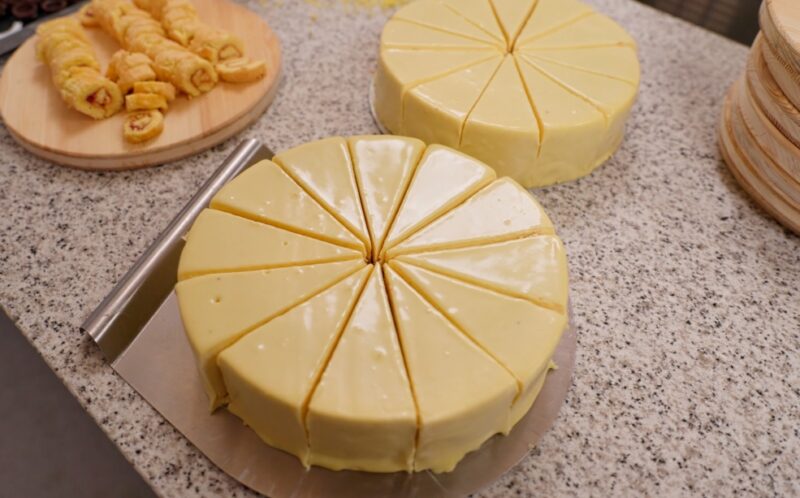
For cakes, moisture is a precious commodity. The best way to retain it is by using an airtight container or plastic wrap to shield the cake from the drying environment of the fridge. Ensure the cake is completely cooled before storing to prevent condensation, which can lead to sogginess.
Slicing Strategy
If you’ve sliced into your cake, the exposed areas can dry out quickly. Press a piece of plastic wrap directly onto the cut sides to form a seal against the air. This will keep the cake fresher for a longer period.
Freeze for Longevity
If you need to keep the cake for more than a few days, freezing might be your best bet. Properly wrapped cake can last in the freezer for up to 3 months without significant quality loss. Thaw it in the fridge a day before you’re ready to serve for the best results.
Adjust to Different Cake Types
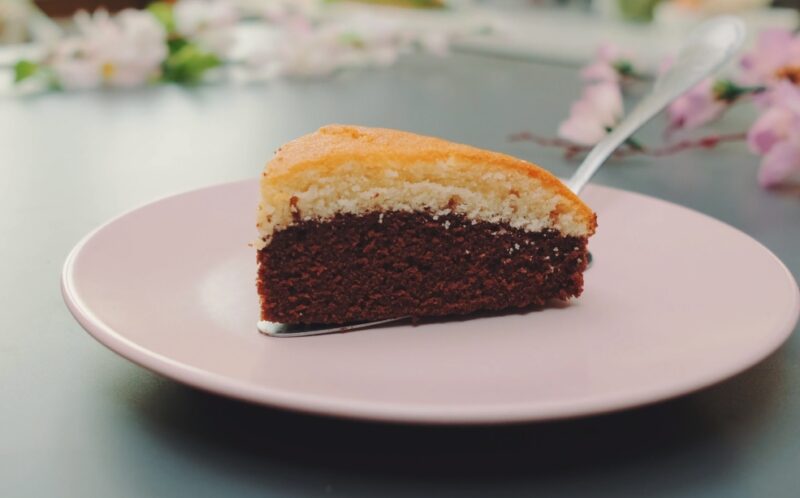
-
The Resilience of Sponge and Dense Cakes
Sponge cakes, known for their light, airy texture, tend to dry out quicker. In the fridge, they can last up to 3 days. Wrapping them in plastic wrap or keeping them in an airtight container is crucial to retain their moisture. Dense cakes, like pound cakes, have a slightly longer fridge life of up to 5 days due to their rich, moist texture.
-
Special Care for Specialty Cakes
Specialty cakes, such as cheesecakes and cakes with perishable toppings or fillings, require extra attention. These should ideally be consumed within 2-3 days. The high dairy content in cheesecakes, for example, makes them more susceptible to spoilage and bacterial growth.
-
How to Unfreeze it Properly?
Even with optimal storage, cakes can lose moisture in the fridge. To revive a slice, you can lightly cover it with a damp paper towel and microwave it for a few seconds. This can reintroduce moisture and warmth, making the cake softer and more palatable.
When you’re ready to serve your refrigerated cake, let it sit at room temperature for about 30 minutes. This allows the flavors and texture to return to their pre-refrigerated state, providing a more enjoyable eating experience.
| Cake Type | Description | Average Duration Frozen |
|---|---|---|
| Unfrosted Sponge Cake | Light and airy, with no frosting | 1-2 months |
| Unfrosted Dense Cake | Rich and moist, like a pound cake | 3-4 months |
| Frosted Cake | Any cake covered with buttercream or fondant | 1 month |
| Cheesecake | Creamy and dense with a graham cracker base | 2-3 months |
| Fruit Cake | Dense cake with candied or dried fruit mix-ins | 4-6 months |
| Layered or Tiered Cake | Multiple layers often with frosting and fillings between | 1 month |
What About Other Deserts?
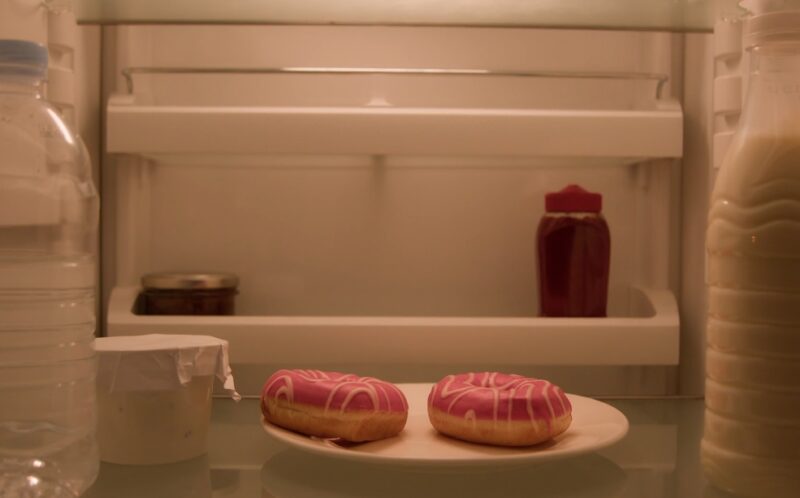
When it comes to desserts, cakes aren’t the only sweet treats that might end up in the fridge. From creamy mousses to flaky pastries, each dessert has its own set of rules for refrigeration. It’s not just about keeping them cool; it’s about maintaining texture and flavor.
Pies and Tarts
- Fruit Pies: Best consumed within 2-3 days, refrigeration can help prevent the growth of bacteria, especially in warmer climates.
- Cream Pies and Custard Tarts: Refrigeration is necessary for these, typically lasting up to 3 days due to their dairy and egg content.
Mousses and Custards
- Mousses: Refrigeration is essential, with a recommended shelf life of 1-2 days to maintain the airy texture.
- Baked Custards: They can last up to 4 days in the fridge, though they may experience some water separation over time.
Cheesecakes and Cream-Based Desserts
- Cheesecakes: Due to their high dairy content, they should be kept refrigerated and can last up to 5 days.
- Cream-Based Desserts: These include desserts like panna cotta or crème brûlée, which should also be consumed within 5 days.
Pastries and Baked Goods
- Cream-Filled Pastries: These need to be refrigerated and are best eaten within 1-2 days.
- Baked Pastries: Items like croissants and Danish pastries don’t require refrigeration and are best enjoyed within 1-2 days to maintain their crispness.
Gelatin-Based Desserts
- Jellies and Gelatin Desserts: These can last in the fridge for up to 7 days. Refrigeration is crucial to retain the gel structure.
Chocolate
- Truffles and Ganache: Refrigeration can extend their life up to 2 weeks, though it may affect the texture and taste slightly.
Ice Cream and Frozen Desserts
- Ice Cream: It’s meant for the freezer, but if it must be refrigerated for a quick thaw, don’t leave it in the fridge for more than 20-30 minutes.
- Frozen Desserts: Similar to ice cream, these are best kept in the freezer. Refrigeration can cause them to become too soft and lose their intended texture.
FAQs
Can I refrigerate a cake with a fondant decoration?
Yes, you can refrigerate a fondant-decorated cake, but it’s not ideal. Fondant can become sticky and may lose its shape due to condensation when bringing it back to room temperature. If you must refrigerate it, keep it in a box to minimize humidity exposure and allow it to slowly come to room temperature before serving to reduce condensation.
How should I wrap a cake with delicate decorations before refrigerating?
For cakes with delicate decorations, it’s best to place them in a cake box or a container large enough to not touch the decorations. If that’s not available, loosely drape plastic wrap over the cake without pressing it onto the decorations to avoid damage.
Is it safe to eat cake that has been refrigerated for longer than the recommended time?
Eating cake that has been refrigerated longer than the recommended time may not be harmful if there are no signs of spoilage, but the quality and taste may be compromised. Always check for any off smells, unusual colors, or mold before deciding to consume a cake that has been stored for an extended period.
Can a cake with a whipped cream topping be frozen instead of refrigerated?
While you can freeze a cake with whipped cream topping, it may not maintain its texture once thawed. Whipped cream tends to separate and become watery after freezing, so it’s best consumed fresh or stored in the fridge if it will be eaten within 1-2 days.
How do I prevent my cake from absorbing odors in the fridge?
To prevent your cake from absorbing odors, ensure it’s stored in an airtight container or well-wrapped in plastic wrap. You can also place a box of baking soda in the fridge to help absorb strong odors.
Last Words
Refrigeration is a balancing act that, when done correctly, can preserve your cake and maintain its deliciousness. By tailoring your approach to the type of cake you have, and by following these storage and serving tips, you can enjoy your cake for as long as possible without sacrificing quality.

